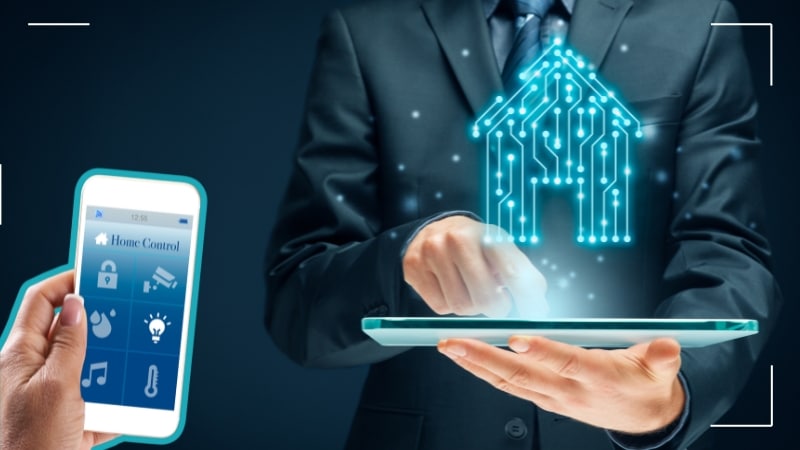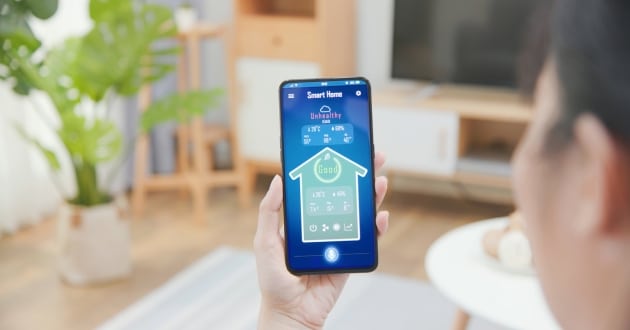Smart Home Automation Systems are transforming the way we interact with our living spaces, offering convenience, security, and energy efficiency all from the touch of a button or a voice command.
As technology advances, more people are turning to these systems to create homes that not only meet their daily needs but also anticipate them. With the ability to control lighting, climate, appliances, and even security from anywhere, the appeal of a smart home is clear.
In recent years, the popularity of Smart Home Automation Systems has grown exponentially. Homeowners are increasingly embracing these systems, recognizing that they offer a new level of connectivity and control over household functions.
But what makes a home “smart”? From intuitive thermostats to voice-activated assistants, these systems are composed of devices and applications that communicate with each other, creating an integrated and personalized experience tailored to the user’s preferences.
As the industry for smart home technology expands, so does the range of products available, providing options for nearly every need and budget. This guide will delve into what Smart Home Automation Systems are, their primary components, the benefits they bring, and some popular examples to illustrate their functionality.
Let’s explore how these systems work, why they’re becoming essential for modern living, and what factors to consider when choosing the right system for your home.
What Are Smart Home Automation Systems?

Smart Home Automation Systems refer to the technology that allows homeowners to control various devices and functions within their homes remotely and, in some cases, automatically.
These systems operate through a central control system, such as a smartphone app or a home assistant like Amazon Alexa or Google Assistant. Key devices within these systems include smart lights, thermostats, locks, and surveillance cameras. Many of these devices connect through Wi-Fi, Bluetooth, or Zigbee networks, enabling seamless integration and operation.
One of the primary appeals of these systems is their ability to offer convenience and energy efficiency. For instance, smart thermostats can learn a user’s schedule and adjust heating or cooling based on when someone is home or away, resulting in energy savings.
Smart lighting systems can be set to turn off automatically when a room is empty, further enhancing cost savings. As technology advances, the capabilities of Smart Home Automation Systems continue to grow, making them more accessible and customizable.
Moreover, the central hub feature of these systems allows users to manage all their smart devices from a single platform, simplifying user interaction. By connecting each device to a single app or system, homeowners can create routines such as morning wake-up calls that activate lights, adjust the thermostat, and play morning news, all with one command.
Benefits of Smart Home Automation Systems
Implementing a Smart Home Automation System offers numerous benefits, ranging from improved security to enhanced convenience and energy savings. Here’s a closer look at the key advantages these systems provide:
Enhanced Security: One of the standout features of Smart Automation Systems is their ability to improve household security. With smart locks, surveillance cameras, and alarm systems, homeowners can monitor their property from anywhere in the world. Advanced systems send alerts directly to your smartphone if there’s unusual activity, such as an unexpected visitor or a breach in the system.
Smart home automation systems offer a range of benefits that are increasingly reshaping modern living. To begin with, these systems bring unparalleled convenience by allowing users to control lights, appliances, and security features remotely, often through a smartphone.
Not only does this make daily tasks more manageable, but it also enhances security by enabling real-time monitoring and alerts. Additionally, smart home devices can help reduce energy costs by optimizing usage—for instance, automatically adjusting heating or lighting based on presence, which not only saves money but also promotes sustainability.
For those interested in staying updated, learning how to get news alerts about the latest smart home advancements can provide valuable insights into new technologies and trends. In short, smart home automation systems blend convenience, security, and efficiency, making them an essential component of the modern home.
Popular Examples of Smart Home Automation Systems
The market is filled with various smart home systems, each offering unique features. Here are some well-known systems and their offerings:
1. Amazon Alexa
Amazon Alexa is one of the most widely recognized smart home systems, thanks to its compatibility with thousands of devices and ease of use. With Alexa, homeowners can control lights, set reminders, play music, and even make calls, all through voice commands.
Alexa-compatible devices are versatile and range from speakers to thermostats, making it easy to create a comprehensive Smart Home Automation System.
2. Google Home
Google Home, or Google Nest, offers similar functionalities to Alexa, with an added emphasis on integration with Google’s ecosystem. This system allows users to control their smart home devices, ask questions, and even get updates on traffic or weather, making it an ideal option for those already using Google services. Additionally, Google Home can recognize multiple voices, making it a great choice for families.
3. Apple HomeKit
Apple HomeKit is a fantastic option for users in the Apple ecosystem. It offers robust privacy features and integrates seamlessly with iPhones, iPads, and Macs. Although the selection of compatible devices is more limited, Apple HomeKit is known for its high level of security and ease of use.
4. Samsung SmartThings
Samsung’s SmartThings is a comprehensive smart home system that supports a wide range of devices and automation options. Unlike some other systems, SmartThings works with various devices beyond Samsung products, making it a flexible choice for those with devices from multiple brands.
The Role of Artificial Intelligence in Smart Home Automation Systems
Artificial Intelligence (AI) plays a significant role in Smart Automation Systems by learning user preferences and optimizing daily routines. AI can adapt lighting, temperature, and other settings based on patterns in user behavior, leading to a truly personalized experience.
Security Concerns and Privacy in Smart Home Automation Systems
While Smart Home Automation Systems bring numerous advantages, they also raise concerns around security and privacy. Each connected device represents a potential entry point for hackers, making it essential for homeowners to prioritize security measures.
Smart Home Automation Systems have revolutionized the way we interact with our living spaces, offering enhanced convenience, security, and energy efficiency. Here are three official platforms leading the way in smart home automation:
- Home Assistant: An open-source platform that emphasizes local control and privacy, Home Assistant integrates with over 1,000 brands, allowing users to automate and monitor their homes seamlessly.
- Google Home: Google’s smart home platform brings together compatible devices from various brands, enabling users to control and automate their homes through a single app, enhancing daily routines with personalized assistance.
- KNX Association: As a global standard for home and building control, KNX offers a comprehensive solution for automating and simplifying daily life, ensuring comfort, safety, and energy efficiency
Conclusion
In conclusion, Smart Home Automation Systems represent the future of home living, offering a blend of convenience, security, and efficiency. As these systems evolve, they are likely to become even more integrated into everyday life, reshaping how people interact with their homes.
Whether you’re looking for a simple setup to control lights and thermostats or a full-scale system to monitor and manage security, energy, and comfort, there’s an option available to meet your needs. By understanding the different components, benefits, and available systems, homeowners can make informed decisions to build a truly personalized and smart living environment.
home automation, smart home technology, home automation systems, smart home devices, home automation control, IoT home automation, automated home solutions, home security automation, smart home integration, voice-activated home systems


